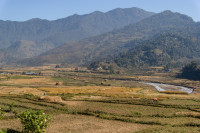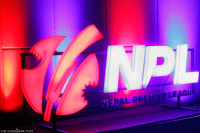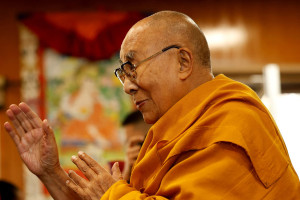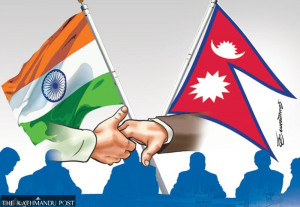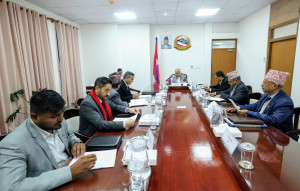Columns
The name game
Oli’s claim that Everest should be called Sagarmatha reveals inaccuracies about its name and history.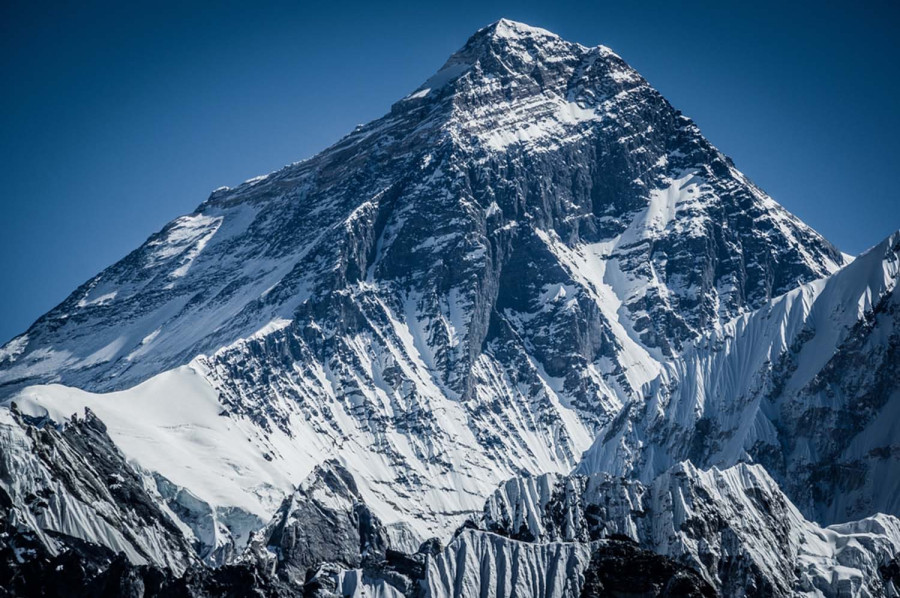
Deepak Thapa
It would come as news to everyone outside Nepal (and within as well) that the highest peak in the world has no name other than Sagarmatha. So much was declared by the self-assumed sage of our times, our very own KP Sharma Oli, the raconteur extraordinaire with expertise on everything under the sun and also Prime Minister of Nepal.
Even if one has to admire the courage it takes to pontifically spew nonsense, I have failed to understand what kicks Oli gets out of making such outlandish statements. Granted, we could not be present when he talked about Sagarmatha/Chhomolongma/Everest, and his assertion may well have been taken out of context. But given his penchant for ridiculous claims on everything ranging from public health to history to mythology to zoology, one could hardly assume that the media was trying to put him in a spot.
On this particular occasion, Oli also said that Mount Everest is a fake name and that we should call it Sagarmatha and nothing else. Grammarian Oli then reminded us that you cannot translate a proper noun and asserted that ‘Sagarmatha is Sagarmatha’. He seems to have forgotten that he had not extended the implied courtesy to the common noun when maintaining ‘gaida is gaida’, referring to the Nepali term for a rhino and making the nonsensical argument that the word ‘rhinoceros’ is invalid because it is in the language of a country where there are no rhinos. He obviously assumed that it was the English who had coined the word. It matters nought to him that ‘rhinoceros’ has a provenance going back thousands of years to ancient Greek times when the creature was aptly named thus to mean ‘nose-horned’. I am waiting for him to issue another fiat that the Royal Bengal Tiger should henceforth be called Pate Bagh or something similarly ‘Nepali’.
Finding Everest
Going back to where we started, Oli had not quite finished. The mountain historian that he also is piped in to enlighten his audience with a made-up yarn that the person after whom Everest was named was a Britisher who had calculated that Lhotse, not Sagarmatha, was the higher one and hence Everest has nothing to do with Sagarmatha. Anyone with the scantest knowledge of the history of ‘Peak b’, later called ‘Peak 15’ and finally Mount Everest, is well aware that the mountain was named after George Everest, a one-time Surveyor General of India, by his successor, Andrew Waugh. Sir George had long been done with calculations by that time, and Lhotse features nowhere in the lore of Everest except as its lofty neighbour.
The actual computing that determined the mountain’s status is attributed to Radhanath Sikdar, an employee of the Survey of India. In the famous apocryphal story, Sikdar is said to have burst into Waugh’s room one day in 1852 to announce: ‘Sir, I have discovered the highest mountain in the world.’ As Craig Storti writes in his fascinating book, The Hunt for Mount Everest, the reality was far from that dramatic. Sikdar worked as part of a team in Calcutta while Waugh was based at the Survey of India headquarters in Dehradun, halfway across India. More importantly, the discovery of the stupendous height was not sudden either, since it had been painstakingly computed over two years by Sikdar and his colleagues from readings made as part of the Great Trigonometrical Survey of India (1802–1871).
Waugh waited another four years while verifying their findings by ‘adjusting and correcting for such factors as light refraction, barometric pressure, temperature, gravity, and new tidal observations that had to be obtained from Karachi’. It was only in 1856 that he was confident enough to write: ‘I am now in possession of the final values of the peak designated XV in the list of the office of the Surveyor General. We have for some years known that this mountain is higher than any hitherto measured in India and most probably it is the highest in the whole world.’
Naming Everest
Peak XV had dethroned various contenders to the title of being the highest in the world. Nanda Devi had reached the top for a bit, and so had Dhaulagiri and Kanchenjunga. Its height having been determined, naming it was the difficult part. In March 1856, Waugh reported to the Royal Geographical Society (RGS) in London explaining his preference: ‘I was taught by my respected chief and predecessor, Colonel Geo. Everest, to assign to every geographical object its true local or native appellation. I have always scrupulously adhered to this rule, as I have in fact to all other principles laid down by that eminent graduist [geodist].’
He went on to state that the mountain had no native name they knew of and that until Nepal allowed them to enter the country, they were unlikely to find any. He then declared that it was his solemn duty to give ‘this lofty pinnacle of our globe’ a name and so: ‘In virtue of this privilege, in testimony of my affectionate respect for a revered chief, in conformity with what I believe to be the wish of all the Members of this scientific department, over which I have the honour to preside, and to perpetuate the memory of that illustrious master of accurate geographical research, I have determined to name this noble peak of the Himalayas “Mount Everest”.’
Waugh’s choice was contested from the very beginning by the British themselves. Prominent among them was Brian Houghton Hodgson, a former British envoy in Nepal. Hodgson protested a few months later at the RGS: ‘Agreeing as I do with Colonel Waugh in the propriety of adopting native names, and cordially sympathising with the sentiment which gave rise to the name Mount Everest, I trust I may be permitted, without offence, to state, in justice to my friends the Nepalese and to myself, who have been so long connected with them, that the mountain in question does not lack a native and ascertained name; that that name is Devadhunga.’
It has since been ascertained that despite his prodigious knowledge about Nepal, Hodgson was mistaken, and there is no mountain called Devadhunga in Nepal. But, as Walt Unsworth says in his magisterial study, Everest, Waugh would certainly have been aware of the name by which it was known on the Tibetan side. Unsworth notes that a French map published back in 1733, based on a reconstruction of crude drawings by French Capuchin monks who had lived in Lhasa in the earlier part of the century, had accurately marked where Everest stands and called it ‘Tschoumou-Lancma’. He writes: ‘If the name Chomolungma (whatever its spelling in Western scripts) was so easily obtainable by a group of travelling monks, it seems incredible that it was not known to the Indian Survey more than a hundred years later.’
The same name would most likely have been known to the Sherpas in the Everest region as well, with their long-standing cultural and commercial links with the other side through the Nangpa-La pass. But our pre-eminent historian Baburam Acharya ignored that when he posited the name ‘Sagarmatha’.
I will deal further with the name game and the scathing takedown of Acharya by the late KP Malla in my next column. But I want to end this one with Unsworth’s comment as he wonders what if George Everest’s name had been Cuthbert Shufflebottom: ‘Perhaps even Waugh would have been less keen on Mt Shufflebottom, for indisputably Everest as a name has a fine ring to it. It sounds right for the highest mountain in the world.’
I find myself quite in agreement.




 9.12°C Kathmandu
9.12°C Kathmandu
